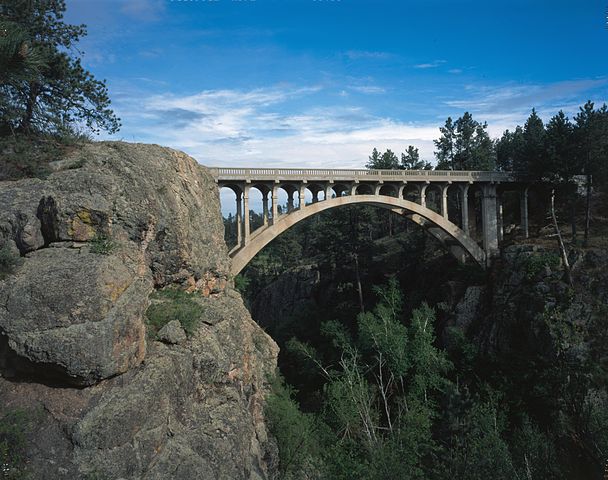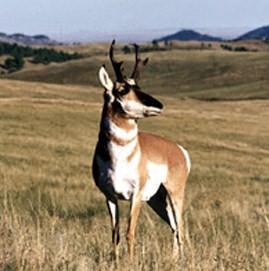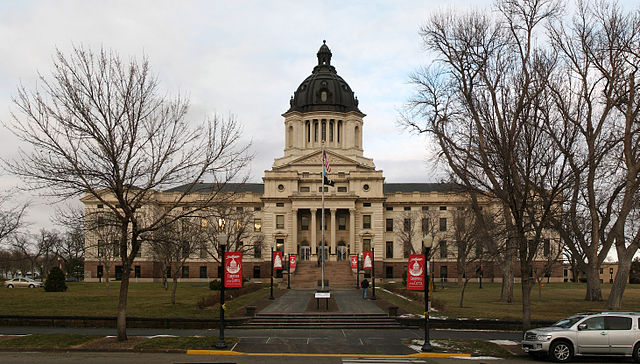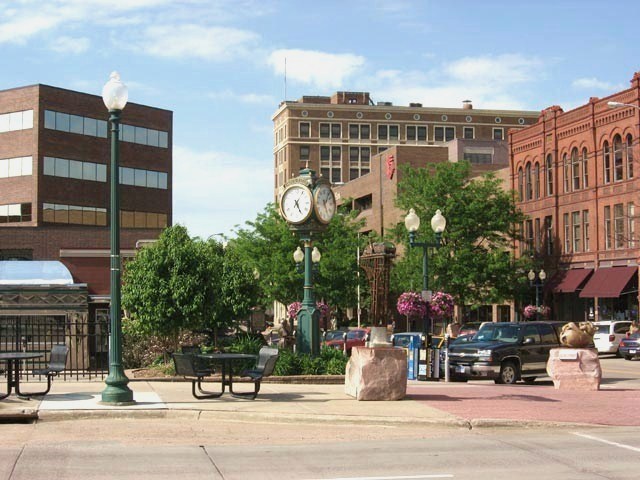
South Dakota
When you visit South Dakota, you’ll find many opportunities to experience first-hand our rich history and heritage. Great Sioux Nation Picture the “he sapa,” a range of pine-covered mountains so green they look black from a distance. Mysterious “mako sica” or “bad land,” a mass of buttes and spires that stretches as far as the eye can see. Imaginea colorful “wacipi,” a powwow filled with traditional singing and dancing. And legendary leaders like Crazy Horse and Sitting Bull.
This is South Dakota, home of the Great Sioux Nation. Here, you can discover the sweeping prairie that captured your imagination in “Dances With Wolves.” Here, you can meet the people whose heritage and culture run through that land like a strong, steady stream. The Black Hills region is home to national treasures. These parks, forests and memorials encompass some of the West’s most stunning landscapes, and they preserve America’s colorful history. In addition, the state park system includes glacial lakes, historic forts and sprawling stretches of riverfront.The four most famous guys in rockMount Rushmore: This epic sculpture features the faces of four exalted American presidents: George Washington, Thomas Jefferson, Theodore Roosevelt, and Abraham Lincoln. South Dakota’s Black Hills provide the backdrop for Mount Rushmore, the world’s greatest mountain carving. These 60-foot high faces, 500 feet up, look out over a setting of pine, spruce, birch, and aspen in the clear western air.
The Crazy Horse mountain carving now in progress will be the world’s largest sculpture (563′ high, 641′ long, carved in the round). It is the focal point of an educational and cultural memorial to and for the North American Indian. From fairs to festivals and rodeos to ethnic celebrations, the statewide calendar of events helps you plan your vacation. You should see South Dakota in the winter. Skiing, snowmobiling, skating, ice fishing and the rest are more than fun adventures. They’re wonderful excuses to sightsee in the cold! South Dakota has broad expanses of prairie, mountain, lake and river-break country open for you and your walking shoes. You’ll want to explore the state’s hiking trails.
South Dakota has four major land regions: the Drift Prairie, the Dissected Till Plains, the Great Plains, and the Black Hills. The Drift Prairie covers most of eastern South Dakota. This is the land of low hills and glacial lakes. This area was called Coteau des Prairies (Prairie Hills) by early French traders. In the north, the Coteau des Prairies is bordered on the east by the Minnesota River Valley and on the west by the James River Basin.
The James River Basin is mostly flat land, following the flow of the James River through South Dakota from north to south. The Dissected Till Plains lie in the southeastern corner of South Dakota. This area of rolling hills is crisscrossed by many streams. Geographic and political features of South DakotaThe Great Plains cover most of the western two-thirds of South Dakota. The Coteau de Missouri hills and valleys lie between the James River Basin of the Drift Prairie and the Missouri River. West of the Missouri River the landscape becomes more rugged and consists of rolling hills, plains, canyons, and steep flat-topped hills called buttes. These buttes sometimes rise 400 to 600 feet (120 to 180 m) above the plains. In the south, east of the Black Hills, lie the South Dakota Badlands.
The Black Hills are in the southwestern part of South Dakota and extend into Wyoming. This range of low mountains covers 6,000 square miles (15,500 km².) with mountains that rise from 2,000 to 4,000 feet (600 to 1,200 m) above their bases. The highest point in South Dakota, Harney Peak (7,242 ft or 2,207 m above sea level), is in the Black Hills. This is the highest point in the United States east of the Rocky Mountains. The Black Hills are rich in minerals such as gold, silver, copper, and lead. The Homestake Mine, one of the largest gold mines in the United States, is located in the Black Hills. The mine has closed and will be the site of an underground science laboratory. South Dakotans also divide the state at the Missouri River into two general regions, known as West River and East River. The river serves as a somewhat stark boundary in terms of geographic, social and political differences between the two regions. West River features a more arid landscape, an economy largely based on tourism and ranching, and, aside from the Indian Reservations, a very conservative political climate. East River, on the other hand, is more densely populated, agriculture there is based more on farming than ranching, and the region is more politically moderate. The Missouri River is the largest and longest river in the state.
Other major South Dakota rivers include the Cheyenne, the James, the Big Sioux, and the White. South Dakota has many natural lakes, mostly occurring in the eastern part of the state. Additionally, dams on the Missouri River create four large reservoirs: Lake Oahe, Lake Sharpe, Lake Francis Case, and Lewis and Clark Lake.





